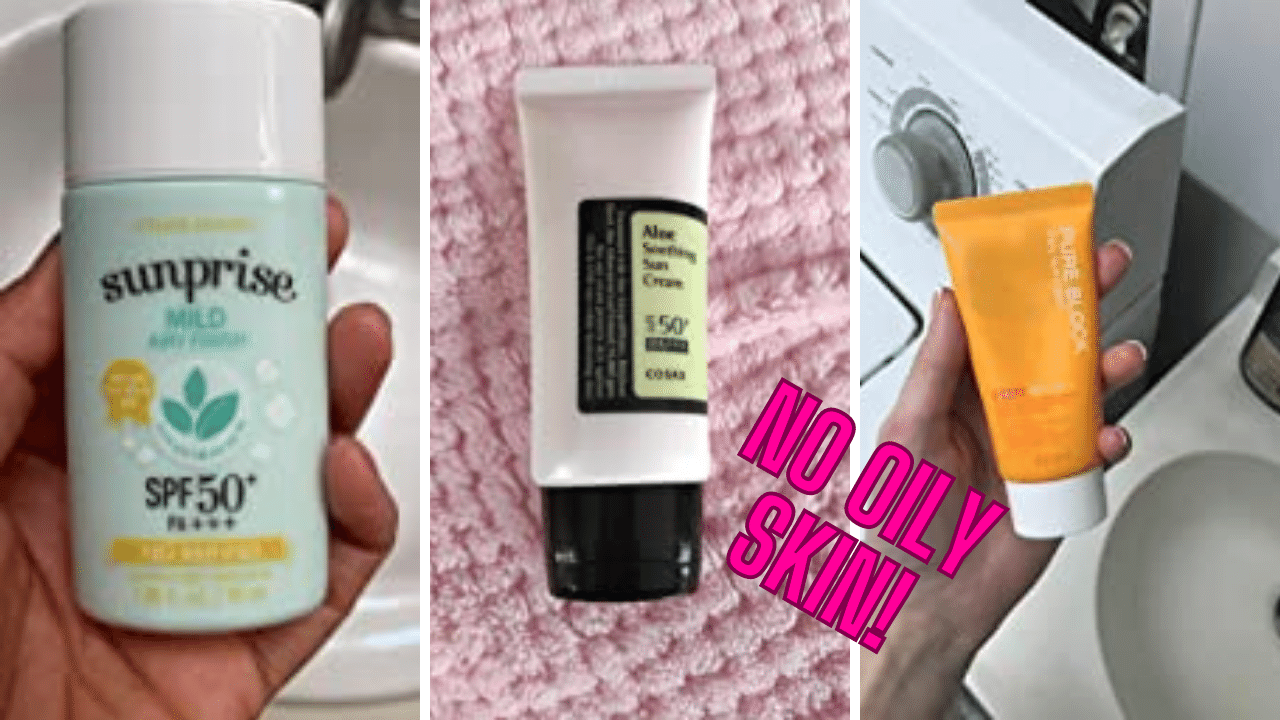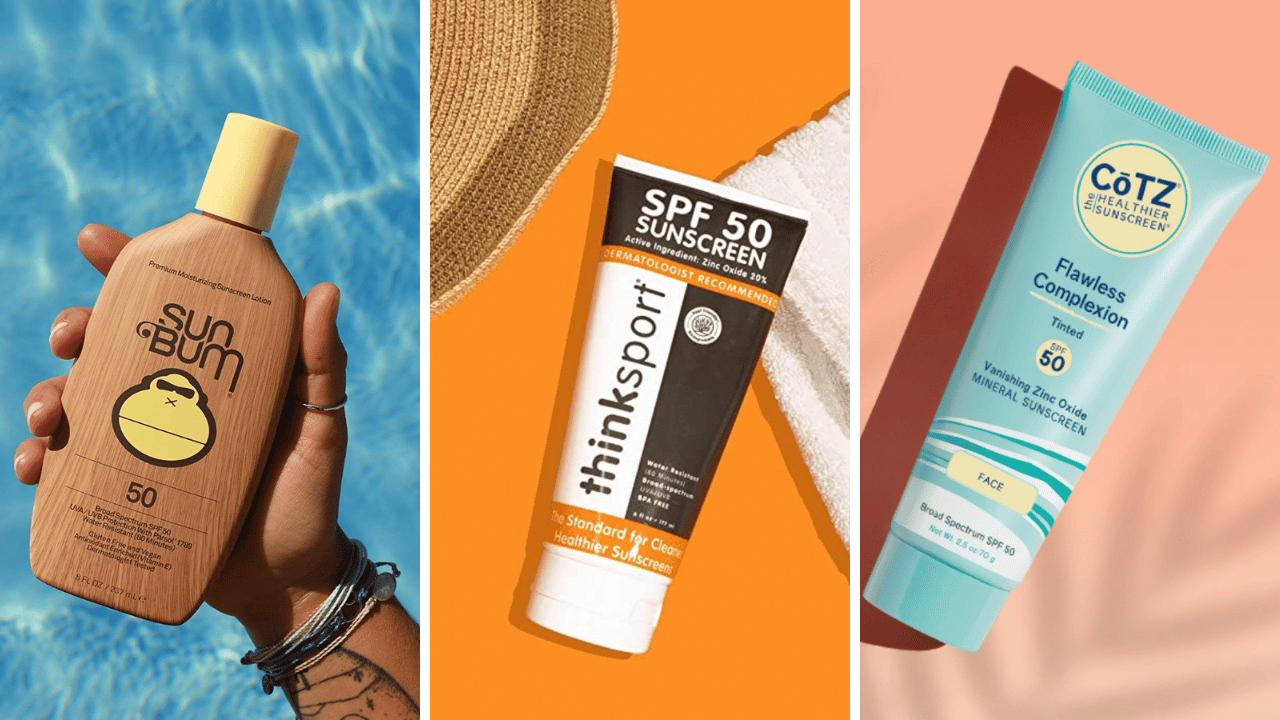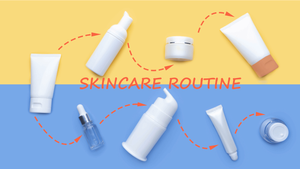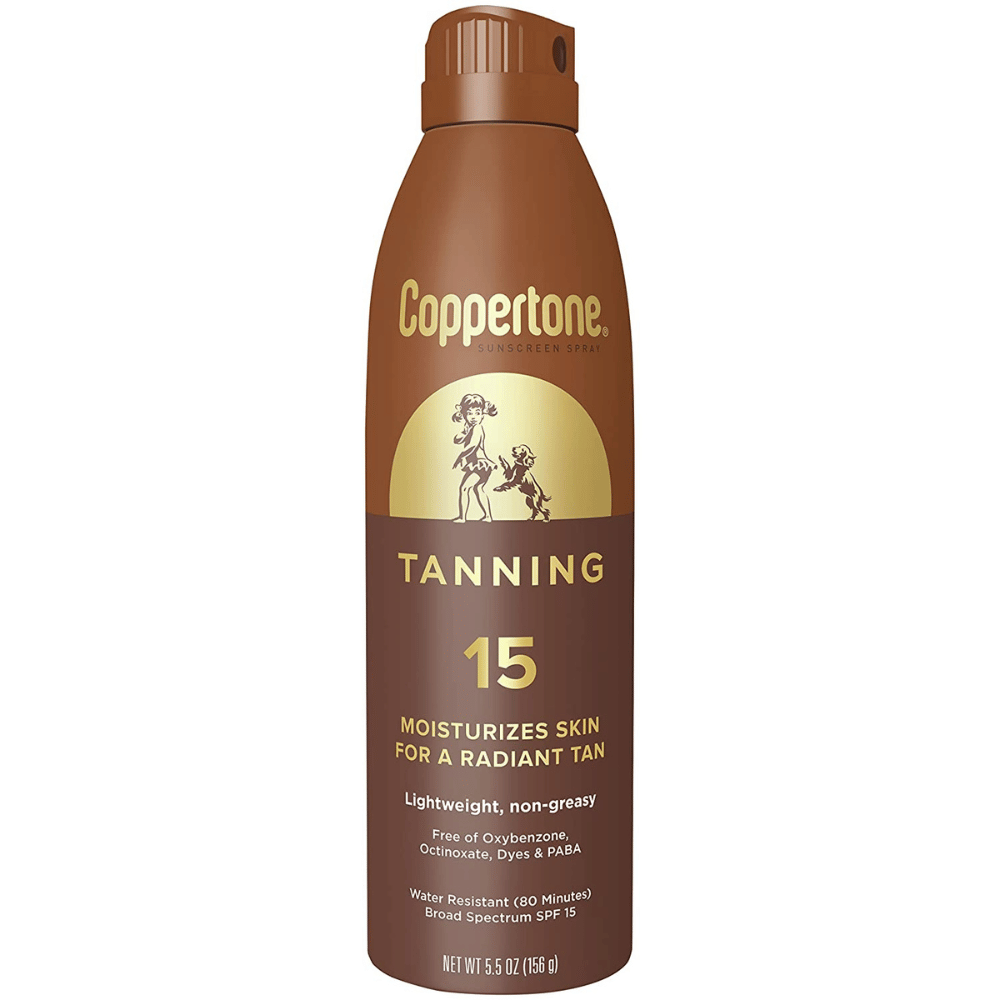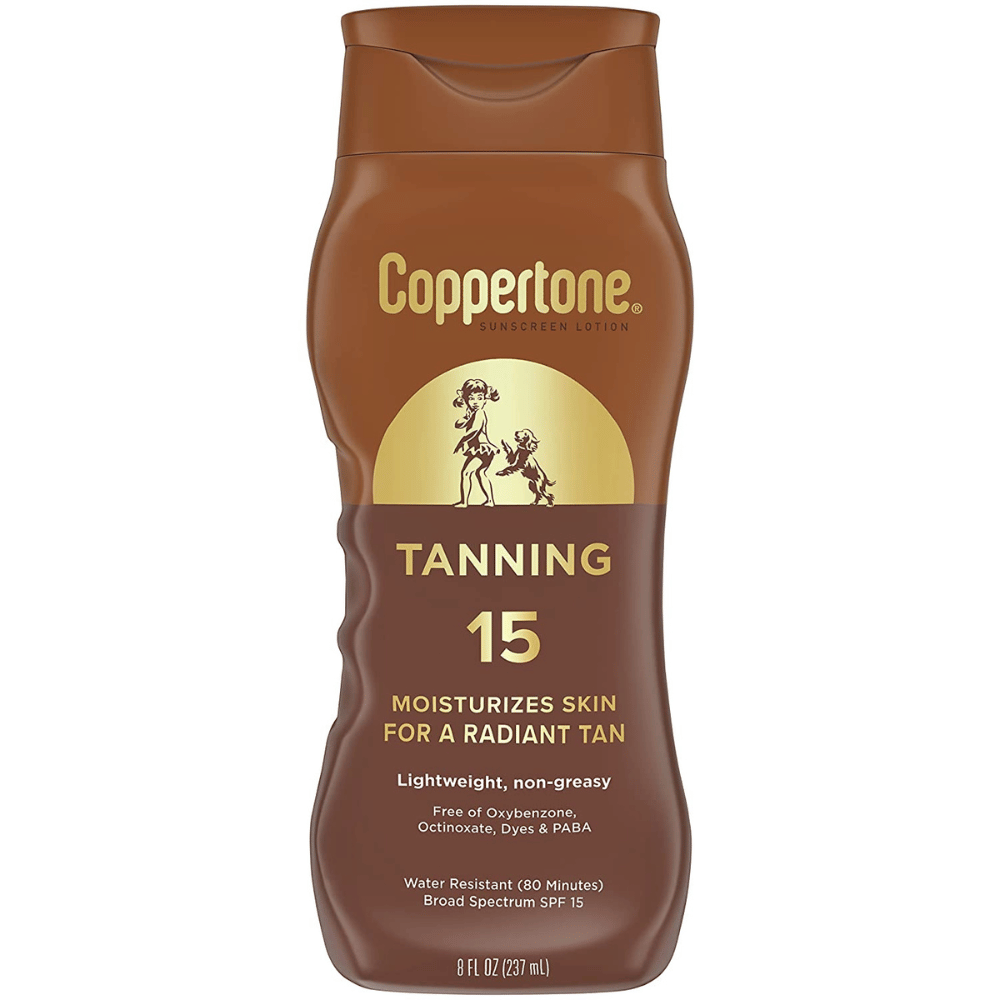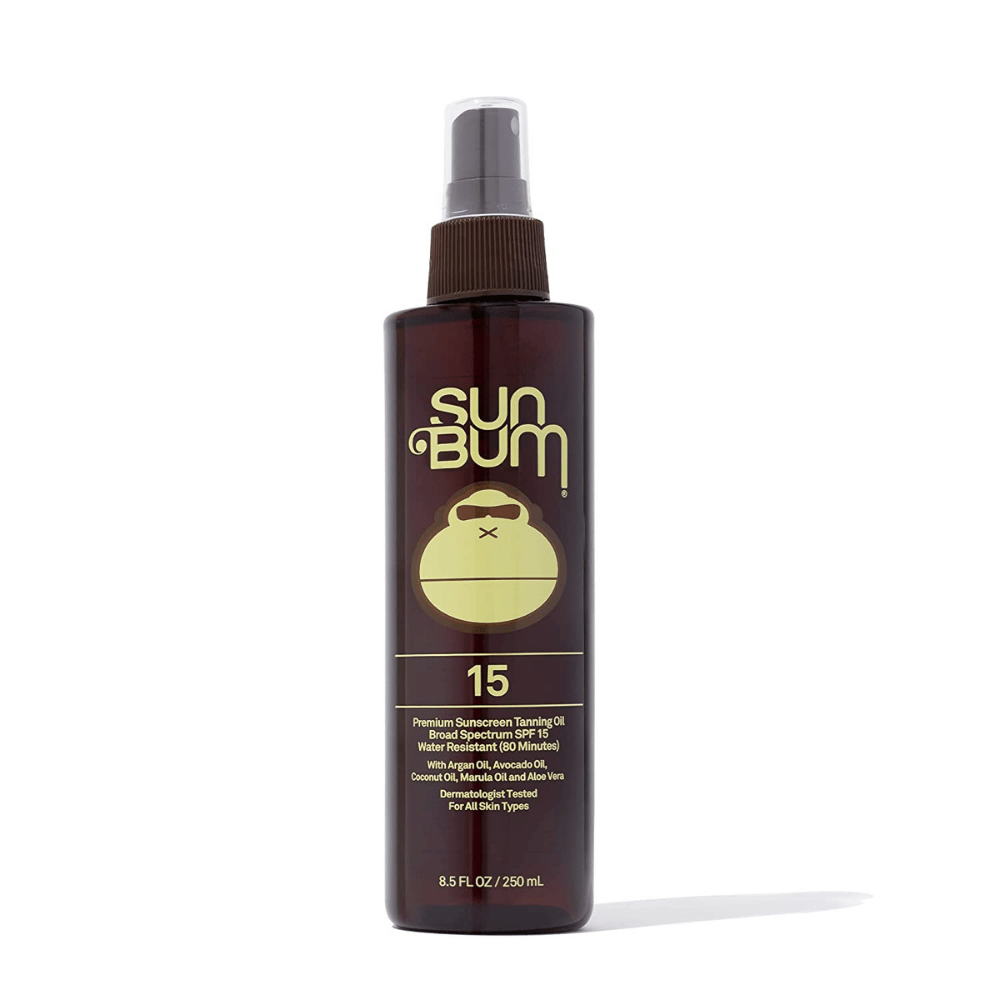Are you looking for the best way to get a golden glow without getting burned? Look no further than the best tanning sunscreen!
These sunscreens are specially formulated to protect your skin from the sun’s harmful rays while still allowing you to get a beautiful tan. It’s perfect for those days when you want to get a little bit of color without the risk of sunburn.
The best tanning sunscreen is easy to apply and won’t leave your skin feeling greasy or sticky. It’s also water-resistant, so you can wear it while swimming or sweating without worrying about it washing off. Plus, it contains natural ingredients that nourish and moisturize your skin while you’re out in the sun.
This article will provide you with all the information you need to know about the best tanning sunscreens. We’ll cover the different types of sunscreens, how to choose the right one for you, and tips for applying it correctly. So get ready to get your golden glow with the best tanning sunscreen!
How We Choose
Are you looking for the perfect tanning sunscreen to help protect your skin while getting that gorgeous summer glow? With so many different types and brands available, it can be hard to know which one is right for you.
Our team of skincare experts has read thousands of product reviews to find the best tanning sunscreens for your needs. We've done all the hard work so that you can easily find and purchase the perfect sunscreen for your summer adventures.
No more guesswork. No more wasted money. Just the perfect tanning sunscreen for your skin type. Check out our reviews of the best sunscreens today and get ready to soak up some summer rays!
Why Trust Us?
Our selection process involves examining key factors such as ingredients, effectiveness, user reviews, and overall value. By taking the guesswork out of the equation, we empower you to make informed decisions and choose the ideal tanning sunscreen for your unique needs. Trust our expertise and follow our recommendations to unlock the full potential of your skin with the right tanning sunscreen.
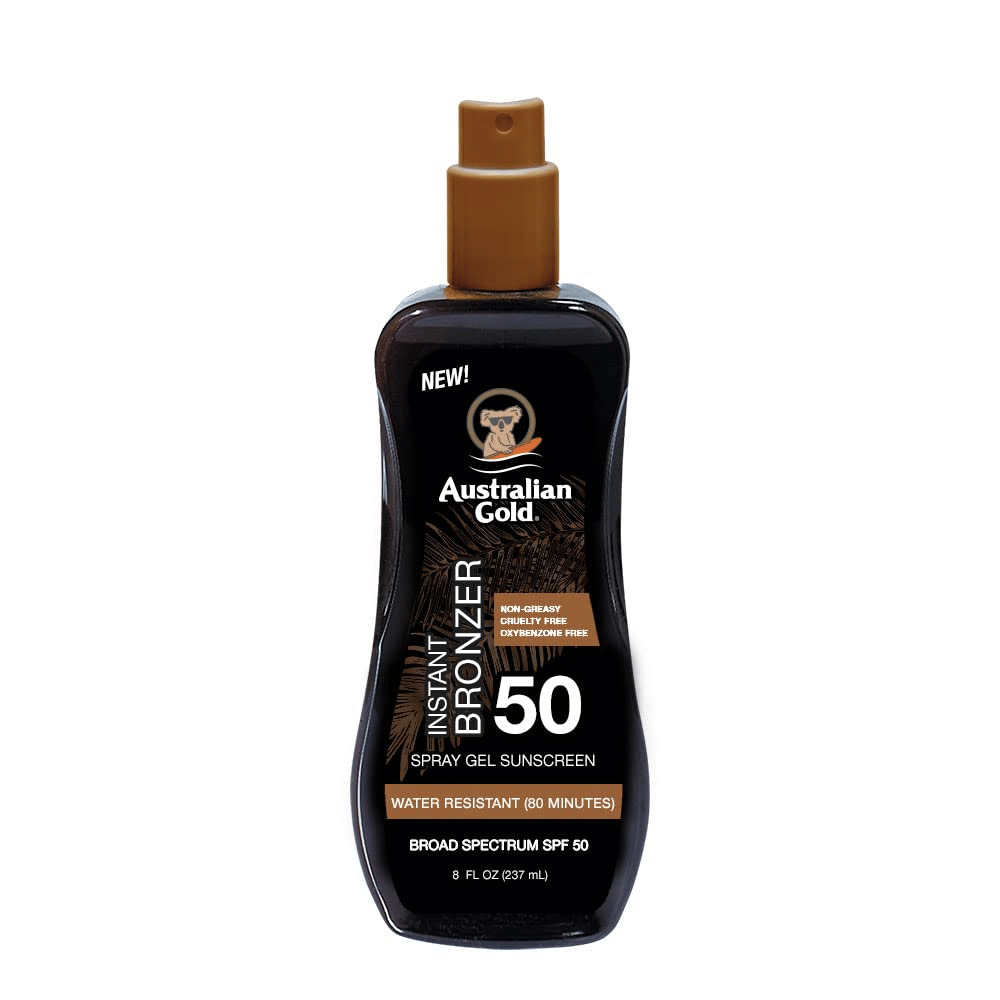
Australian Gold Spray Gel Sunscreen with Instant Bronzer SPF 50
Best Gel Spray Formula
Why We Love It
Australian Gold Spray Gel Sunscreen with Instant Bronzer SPF 50 is the perfect choice for those looking for a convenient and effective sunscreen. The lightweight spray bottle is easy to apply and absorbs quickly into the skin. It provides ultimate hydration that deeply moisturizes the skin, and the Caramel Bronzer imparts a faux sun-kissed golden glow for an instant bronzed look. It is also enriched with a blend of Kakadu Plum extract and Tea Tree Oil, which provide powerful antioxidants that fight off free radicals and leave skin fresh.
What You Should Know
Australian Gold Spray Gel Sunscreen with Instant Bronzer SPF 50 is specially formulated to be PABA Free, Dye Free, Alcohol-Free, and Gluten Free. It is sweat and water-resistant (up to 80 minutes) and comes in a delectable scent of Coconut, Orange, and Vanilla. It provides broad-spectrum sunblock that shields the skin from both UVA and UVB rays and reduces the adverse effects of sunlight. Plus, it is cruelty-free and never tested on animals. Get your Australian Gold Spray Gel Sunscreen with Instant Bronzer SPF 50 today!
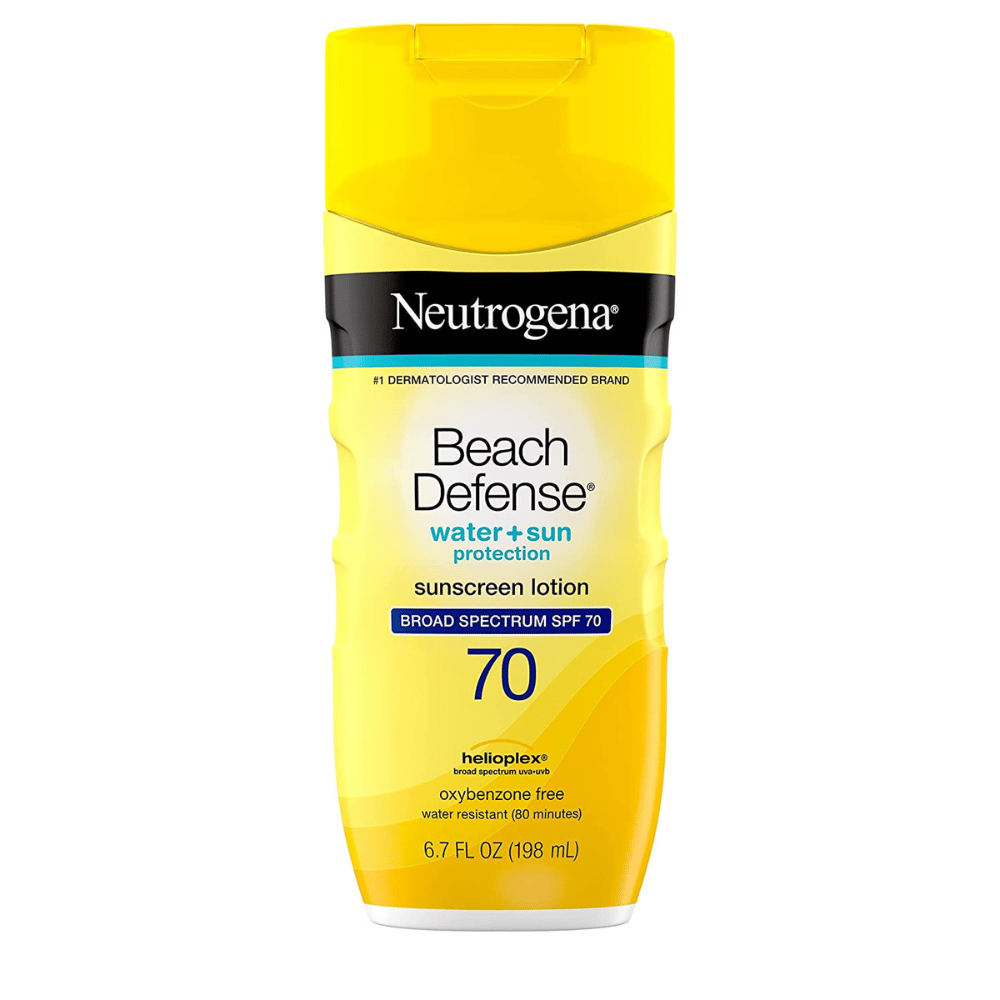
Neutrogena Beach Defense Water Resistant Sunscreen Lotion SPF 70
Best Dermatologist Recommended
Why We Love It
Make sure your family's skin is protected from the sun with Neutrogena Beach Defense Water Resistant Sunscreen Lotion with SPF 70. This fan-favorite line is fast absorbing and lightweight while providing beach-strength broad spectrum UVA/UVB sun protection. Our oil-free sunscreen helps protect against the signs of sun damage while you’re having a fun day at the beach and is specially designed for active families. With SPF 70, it helps prevent sunburn and decrease the risk of skin cancer and early skin aging caused by the sun when used as directed. Plus, it's stabilized with Helioplex sunscreen technology and is water-resistant for up to 80 minutes.
What You Should Know
Neutrogena Beach Defense Water Resistant Sunscreen Lotion with SPF 70 is PABA-free, oxybenzone-free, and fast absorbing. It's easy to apply and is the #1 dermatologist-recommended suncare brand. Plus, its lightweight formula won't leave a greasy residue, so you can enjoy the outdoors in comfort. So get your own Neutrogena Beach Defense Water Resistant Sunscreen Lotion with SPF 70 today and make sure your family is protected from the sun!
Why We Love It
We all want to avoid an unpleasant sunburn, and that's why Coppertone Tanning Sunscreen Spray SPF 15 is a must-have. Its lightweight formula quickly dries in seconds with even coverage for your skin without causing clogged pores or breakouts. Additionally, the spray is water resistant up to 80 minutes with its dyes-free, oxybenzone-free, and PABA-free composition; rest assured knowing you can enjoy safe sun protection from this sunscreen spray!
What You Should Know
For all your sun protection needs, Coppertone's Tanning Sunscreen Spray SPF 15 is here to offer you broad-spectrum UVA/UVB coverage and keep your skin healthy. Its easy application makes it the perfect pick for those seeking convenient but effective sunscreen solutions. Additionally, suitable for every skin type, this spray will give you complete confidence in its ability to guard against harmful UV rays while keeping your complexion looking great. Get yours today and start protecting yourself from the sun!
Why We Love It
Whether you're looking for a sun-kissed glow or want to protect your skin from the sun's harmful rays, Coppertone Tanning Sunscreen Lotion SPF 15 is a perfect choice. This lightweight sunscreen won't make your skin feel greasy and is enriched with Vitamin E to keep the skin feeling moisturized. Plus, it's water resistant for up to 80 minutes, making it perfect for a day at the beach or sitting by the pool.
What You Should Know
Coppertone Tanning Lotions SPF 15 are free from dyes, PABA, and Oxybenzone, so you can feel confident that your skin is safe from any potentially harmful ingredients. It also provides broad-spectrum protection against both UVA and UVB rays, so you know you're getting the best protection possible. With Coppertone Tanning Sunscreen Lotion SPF 15, you can enjoy a beautiful sun-kissed glow without the risk of sunburn or skin damage. So get your Coppertone Tanning Sunscreen Lotion SPF 15 today!
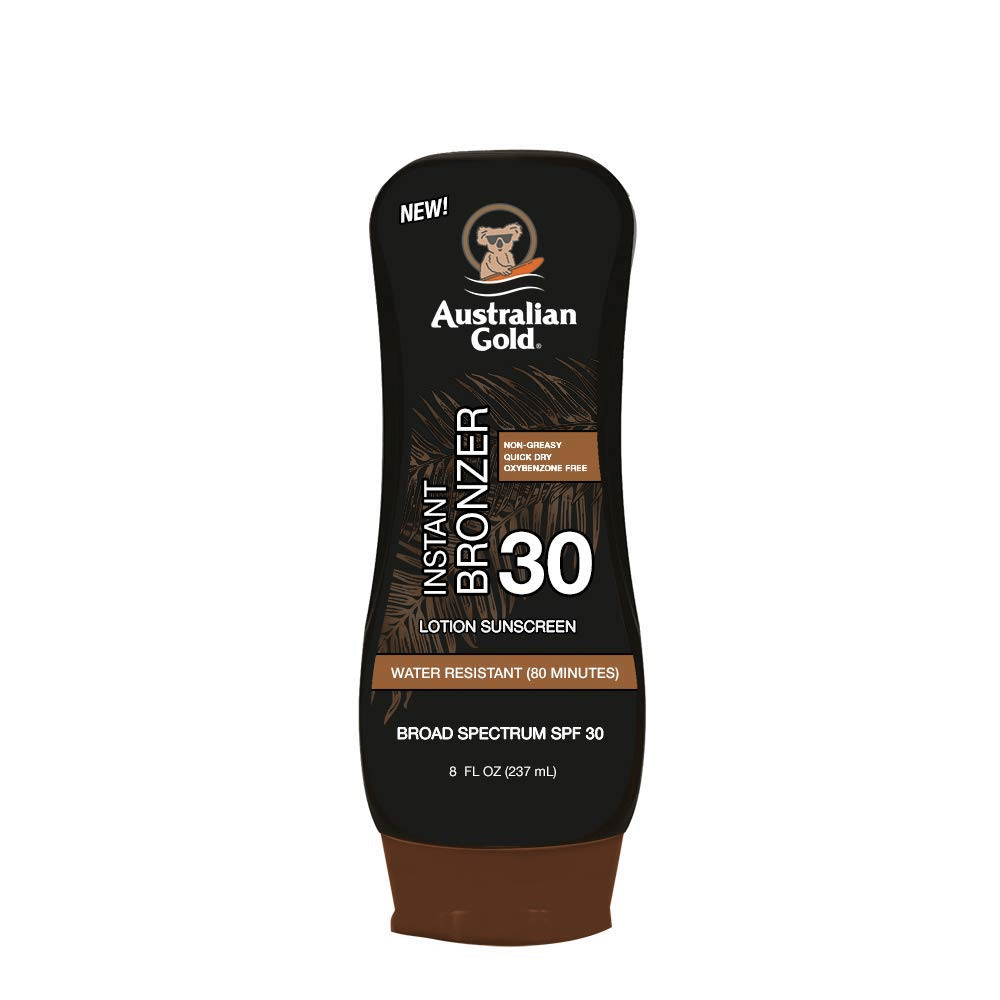
Australian Gold Sunscreen Lotion with Instant Bronzer SPF 30
Best Quick-Dry Formula
Why We Love It
Australian Gold Sunscreen Lotion with Instant Bronzer SPF 30 is perfect for achieving an effortless faux sun-kissed glow. This unique formula is enriched with Sunflower Seed Oil, Olive Fruit Oil, and Cocoa Seed Butter to hydrate and deeply moisturize the skin. Plus, its caramel bronzer gives your skin an instant tinted look. Its Kakadu Plum extract and Tea Tree Oil both provide powerful antioxidant protection to help fight off free radicals.
What You Should Know
Australian Gold's sunscreen tanning lotion is designed to be Oxybenzone Free, PABA Free, Phthalate Free, Gluten Free, and is purely Vegan. It is also cruelty-free and has never been tested on animals. Plus, its quick-dry formula provides direct application control and gets easily absorbed by the skin, and is water-resistant for up to 80 minutes. So get your Australian Gold Sunscreen Lotion with Instant Bronzer SPF 30 today and protect your skin while tanning!
Sun Bum SPF 15 Moisturizing Dark Tanning Oil
Best Spray Formula
Why We Love It
Sun Bum SPF 15 Moisturizing Dark Tanning Oil is the perfect choice for achieving a beautiful bronzed look while still protecting your skin. Formulated with a broad spectrum of UVA/UVB protection and water-resistant, reef-friendly ingredients, this moisturizing oil is great for all skin types. It contains a blend of aloe vera, green tea butter, marula oil, argan oil, coconut oil, and avocado oil that leaves your skin feeling soft and smooth. Plus, it's hypoallergenic, oxybenzone-free, octinoxate-free, gluten-free, cruelty-free, and paraben-free for a safe and fun day in the sun.
What You Should Know
Sun Bum SPF 15 Moisturizing Dark Tanning Oil is the perfect choice for anyone who wants to get a golden brown tan while still keeping their skin nourished. Not only does it provide broad-spectrum UVA/UVB protection, but it also helps to keep your skin hydrated and soft. Plus, it's free of common allergens, making it safe for anyone who has sensitive skin. So get your own Sun Bum SPF 15 Moisturizing Dark Tanning Oil and get that perfect summer glow!
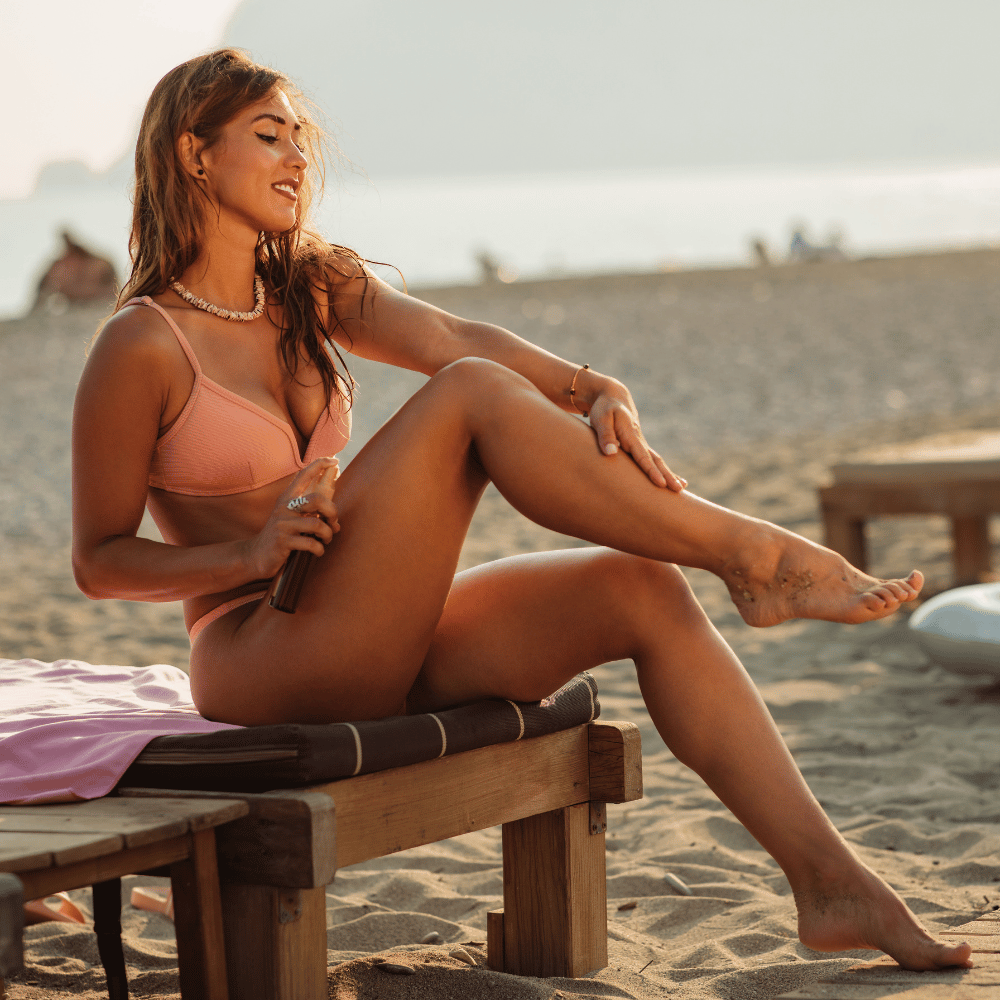
Buyer's Guide For The Best Tanning Sunscreens
When it comes to tanning, it's important to protect your skin from the sun's harmful rays. Tanning sunscreens are specifically designed to help you achieve a golden glow while also protecting your skin from sunburn, premature aging, and skin cancer. In this buyer's guide, we'll go over the different kinds of tanning sunscreens, different levels of SPF, benefits, tips, and any other useful information.
Types of Tanning Sunscreens:
There are two main types of sunscreen: chemical and physical. Chemical sunscreens contain chemicals such as oxybenzone, octinoxate, avobenzone, and octocrylene which absorb UV rays before they can cause skin damage. Physical sunscreens, on the other hand, sit on top of the skin and physically block UV rays from penetrating the skin. They typically contain zinc oxide or titanium dioxide for maximum protection. There are also mineral-based formulas that combine both physical and chemical ingredients for added protection. Regardless of the type of sunscreen you choose, it is important to use a product with an SPF rating that is appropriate for your skin type to ensure maximum protection from UV radiation.
Sunscreen type can be even further distinguished by the following:
- Oil-Based Sunscreens: These sunscreens are formulated with oils that help your skin absorb the sun's rays more effectively. They also help to moisturize your skin, leaving it feeling soft and smooth.
- Water-Based Sunscreens: These sunscreens are lightweight and easier to apply than oil-based sunscreens. They're also less likely to clog your pores, making them a great option for people with acne-prone skin.
- Mineral Sunscreens: These sunscreens use mineral ingredients like zinc oxide and titanium dioxide to physically block the sun's rays. They're often preferred by people with sensitive skin or those who want to avoid chemical sunscreens.
Different Levels of SPF:
SPF, or Sun Protection Factor, measures a sunscreen's ability to protect your skin from UVB rays, which are the primary cause of sunburn. The higher the SPF, the more protection the sunscreen provides.
- SPF 15: Provides moderate protection against UVB rays. This means that it blocks about 93% of UVB rays. This level of protection is suitable for people who are not overly sensitive to the sun and do not have a history of skin cancer or other skin conditions.
- SPF 30: Provides high protection against UVB rays. This level of protection blocks about 97% of UVB rays. It is a good choice for people with fair skin, those who spend a lot of time outdoors, or those with a family history of skin cancer.
- SPF 50: Provides very high protection against UVB rays. This level of protection blocks about 98% of UVB rays. It is recommended for people with very fair skin, those who are prone to sunburns or have a history of skin cancer, and those who spend extended periods in the sun.
- SPF 70: Provides very high protection against UVB rays, similar to SPF 50. However, it's important to note that there isn't a significant difference in protection between SPF 50 and SPF 70. The difference in protection is only about 1%.
- SPF 100: Provides the highest protection against UVB rays. It blocks about 99% of UVB rays, whereas SPF 50 blocks about 98%. However, it's important to note that no sunscreen can block 100% of UVB rays.

Sometimes you may see a + sign after the SPF rating on a sunscreen product which indicates that the sunscreen provides a higher level of UVA protection than the minimum required by the European Commission's recommendation. These sunscreens can carry the "+" sign on their packaging to indicate their superior UVA protection. It's important to note that the "+" sign is not a universal symbol and may not be used in all countries or regions.
If you see PA+, it is a labeling system that is commonly used in some Asian countries, such as Japan, South Korea, and Taiwan, to indicate the level of protection a sunscreen provides against UVA rays. The "+" sign indicates the level of UVA protection, and the more "+" signs a sunscreen has, the higher the level of UVA protection.
PA stands for "Protection Grade of UVA", and the number of "+" signs after it represents the level of UVA protection. Here is what each level of PA rating means:
- PA+ provides some UVA protection, but the lowest level of protection.
- PA++ offers moderate UVA protection.
- PA+++ provides high UVA protection.
Therefore, if a sunscreen product has a PA+++ rating, it offers the highest level of UVA protection among these three levels. It's important to note that the PA rating only indicates UVA protection and does not indicate the level of UVB protection. So, it's important to choose a sunscreen that provides broad-spectrum protection, meaning it protects against both UVA and UVB rays, to ensure full protection from the harmful effects of the sun.
It's important to note that no sunscreen can provide 100% protection against UVB rays. Sunscreens with higher SPF ratings do offer more protection, but the difference between them is minimal. Additionally, SPF only measures protection against UVB rays, not UVA rays, which can also cause skin damage. Therefore, it's important to choose a sunscreen that offers broad-spectrum protection, meaning it protects against both UVA and UVB rays.
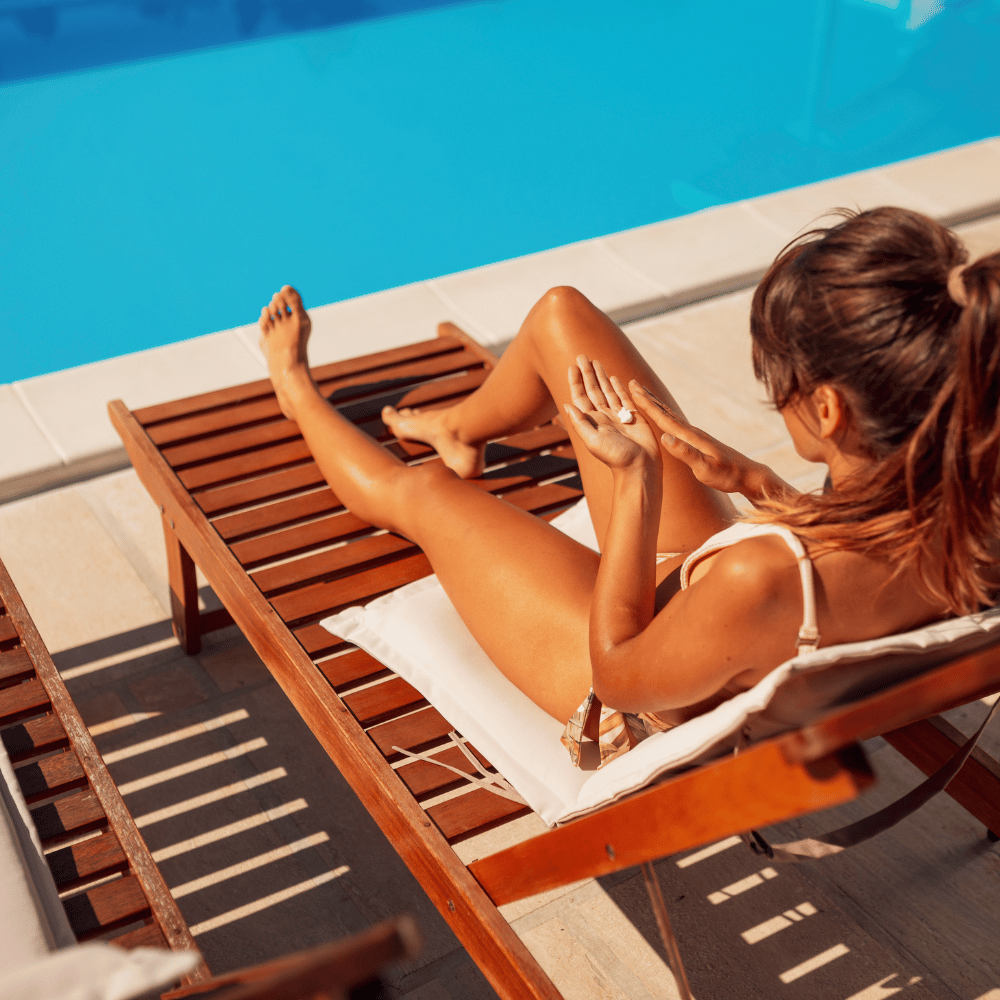
Benefits of Tanning Sunscreens:
- Protects your skin from harmful UV rays: Tanning sunscreens protect your skin from UV rays that can cause sunburn, premature aging, and skin cancer.
- Helps you achieve a tan: Tanning sunscreens are specifically designed to help you achieve a golden glow while still offering some skin protection.
- Moisturizes your skin: Many tanning sunscreens contain ingredients that help to moisturize and nourish your skin, leaving it feeling soft and smooth.
Tips for Using Tanning Sunscreens:
- SPF: When it comes to choosing a tanning sunscreen, the SPF factor (sun protection factor) is an important factor to consider. A higher SPF will offer more protection from UV rays, while a lower SPF won’t be as reliable at preventing burns and skin damage. Make sure that the sunscreen has an SPF rating of at least 15 or higher. Ensure that the sunscreen is waterproof or sweat-proof so it won't rub off easily while swimming or exercising.
- Choose an SPF level based on your skin type: For example, if you have fair skin it's best to opt for a higher SPF protection such as 30+ whereas those with darker skin tones can choose an SPF of 15-30. It's also important to look for a sunscreen that is lightweight and doesn't clog pores, as this can result in irritation and discomfort.
- Product Ingredients: You should be aware of the active ingredients in the product you choose. It is recommended that the products are natural and free from parabens. Please note that chemical sunscreens may contain ingredients like Oxybenzone that are harmful to marine life.
- Apply sunscreen 30 minutes before going outside: This gives the sunscreen time to absorb into your skin and provide maximum protection.
- Reapply sunscreen every two hours: Sunscreen wears off over time, so it's important to reapply it every two hours or after swimming or sweating.
- Use enough sunscreen: You should use about 1 ounce (a shot glass full) of sunscreen for your entire body.
- Avoid tanning during peak hours: The sun's rays are strongest between 10 a.m. and 4 p.m., so it's best to avoid tanning during these hours.
- Wear protective clothing: Wearing hats, sunglasses, and clothing that covers your skin can help protect you from the sun's harmful rays.
- Check the expiration date: Sunscreen can lose its effectiveness over time, so it's important to check the expiration date and replace it as needed.
- Read reviews: Read reviews from other users of the product before purchasing it to get a better idea of how effective it is for different skin types.
In conclusion, tanning sunscreens are a great way to achieve a golden glow while also protecting your skin from the sun's harmful rays. There are different kinds of tanning sunscreens to choose from, each with different levels of SPF and benefits. It's important to follow the tips listed above to ensure that you're using your tanning sunscreen correctly and effectively.
Best Tanning Sunscreen FAQs
It's summertime and you want to get a tan, but you don't know which sunscreen to buy.
With so many different brands and types of sunscreen available, it can be hard to know which one will give you the best protection and the best tan. It's important to find a sunscreen that has the right SPF but also won't leave your skin feeling greasy or sticky.
We've compiled a list of the most frequently asked questions about the best tanning sunscreens for teens so you can know more about these products and pick the one that's right for you.
How do I use sunscreen to tan?
Using sunscreen to tan is not recommended. Sunscreen is designed to protect your skin from the sun's UV rays, which can cause sunburn, premature aging, and even skin cancer. Tanning without sunscreen is not safe and can increase your risk of skin damage.
If you want to tan, the best way to do it is to gradually build up your exposure to the sun over time. Start with short periods in the sun and gradually increase the length of time as your skin becomes more accustomed to the sun's rays. Make sure to wear sunscreen with an SPF of at least 15 and reapply it every two hours. Also, be sure to avoid the sun during the peak hours of 10 am-4 pm when UV radiation is strongest. Lastly, be sure to drink plenty of water and wear a moisturizer to keep your skin hydrated.
What are the benefits of using sunscreen when tanning?
Using sunscreen when tanning can help protect your skin from the sun’s harmful ultraviolet (UV) rays, which can lead to sunburn, skin damage, and even skin cancer. Sunscreen can also help you achieve a more even tan and can help prevent the development of age spots and wrinkles. Additionally, sunscreen can help reduce the risk of sunburn and skin cancer. It is important to use sunscreen with an SPF of at least 15 and to reapply it every two hours when in direct sunlight. Sunscreen should also be applied before any outdoor activity, even on cloudy days.
What does SPF stand for?
SPF stands for Sun Protection Factor. It is a measure of how well a sunscreen will protect your skin from UVB rays, which are the primary cause of sunburn and long-term skin damage. The higher the SPF number, the more protection the sunscreen will provide.
What's the difference between UVA and UVB rays?
Ultraviolet A (UVA) and ultraviolet B (UVB) rays are two types of radiation emitted from the sun that can cause skin damage. UVB rays are more intense than UVA rays and cause direct damage to the skin’s upper layers, resulting in sunburns and skin cancer. UVA radiation is more diffuse and penetrates deeper into the skin, causing less immediate damage but leading to premature aging and wrinkles over time. It is important to remember that both UVA and UVB radiation can be harmful, so it is important to use sunscreen with an SPF rating of at least 15 or higher to block both types of radiation when exposed to the sun.
How often should I reapply sunscreen when tanning?
It is recommended that you reapply sunscreen every two hours when tanning, and more often if you are swimming or sweating heavily. Sunscreen should also be applied liberally and evenly, and should not be rubbed in. A good rule of thumb is to use one ounce (a shot glass full) of sunscreen to cover the exposed areas of your body. Sunscreen should also be applied 15 to 30 minutes before going outside to ensure maximum protection. Additionally, it is important to use sunscreen with an SPF of at least 30 and to cover all exposed skin.
How do I avoid getting sunburned when tanning?
The best way to avoid getting sunburned and prevent sun damage when tanning is to use sunscreen and make sure to reapply it every two hours. Additionally, it is important to limit your time in the sun and wear protective clothing, such as a hat and sunglasses. It is also important to stay hydrated and seek shade during the hottest parts of the day. Lastly, it is important to check the UV index before going out in the sun, and if it is high, it is best to avoid tanning and stay out of direct sunlight.
How long should I wait to tan after applying sunscreen?
It is recommended to wait at least 15 minutes after applying sunscreen before tanning. This gives the sunscreen time to absorb into your skin and form a protective barrier. It is also important to remember to reapply sunscreen every two hours or after swimming or sweating.
What is the difference between sunscreen and sunblock?
Sunscreen and sunblock are both products designed to protect the skin from the sun’s ultraviolet (UV) rays. Sunscreen is a lotion, cream, or spray that absorbs UV rays and prevents them from reaching the skin. Sunblock is a physical barrier that reflects the UV rays away from the skin. Sunblock is usually a thicker, white cream that you can see on the skin. Sunscreen is usually clear and less visible. Sunblock tends to be more effective than sunscreen in blocking UV rays, but it can be more difficult to apply.
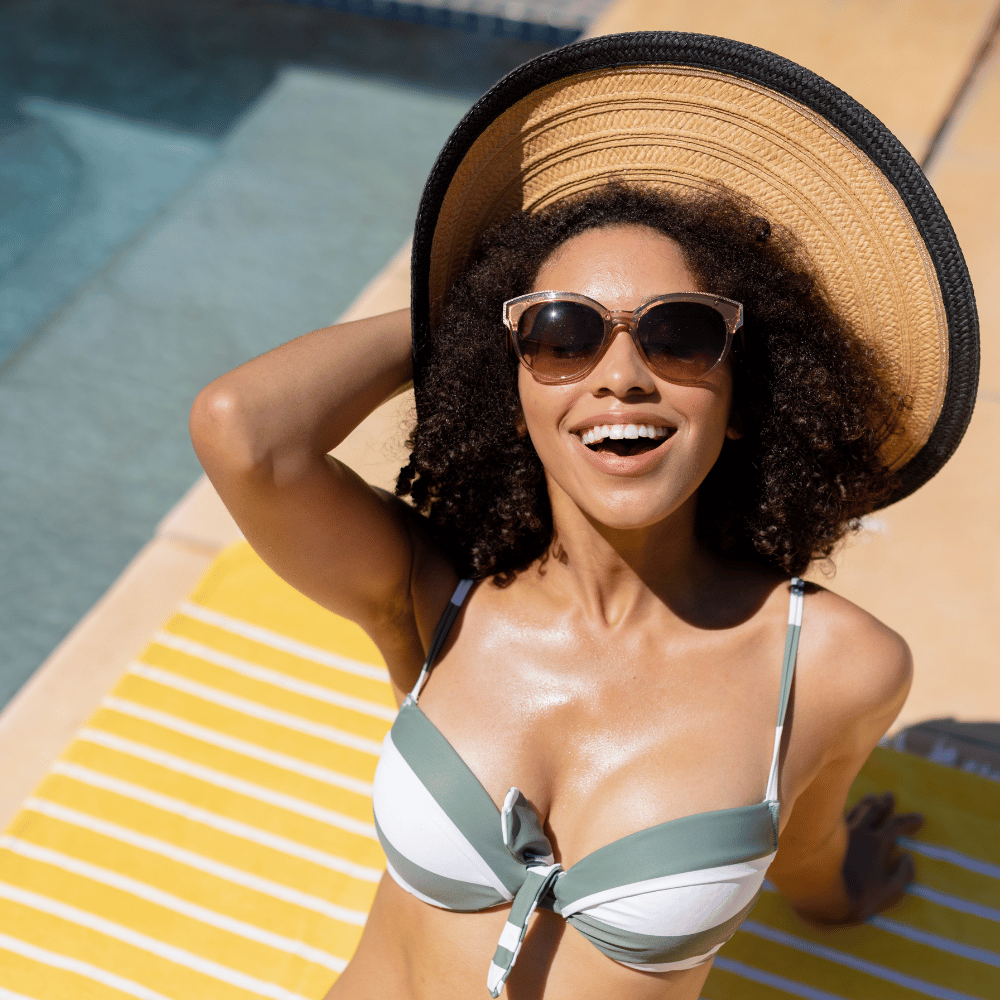
The Best Tanning Sunscreen For You
We’ve taken a look at 9 of the best sunscreens for tanning on the market and we hope this review has helped you find the one that’s perfect for your needs. Whether you’re looking for a product that won’t clog your pores or one that offers superior UV protection, there’s a sunscreen out there for you.
So don’t let the sun stop you from having fun this summer! With the right sunscreen, you can get your tan on without worrying about the harmful effects of UV rays. Choose the one that works best for you and get ready to soak up the sun with confidence!
- "There's no better time to start than now." -anonymous
